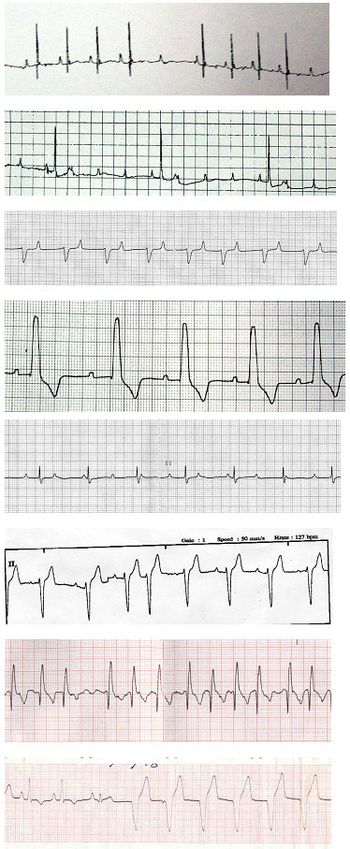
Investigating the best way to monitor dogs with hyperadrenocorticism and whether fructosamine concentrations can be used to monitor glycemic control in diabetic patients.
Department of Small Animal Clinical Sciences
Western College of Veterinary Medicine
University of Saskatchewan
Saskatoon, SK S7N 5B4

Investigating the best way to monitor dogs with hyperadrenocorticism and whether fructosamine concentrations can be used to monitor glycemic control in diabetic patients.

The latest information on bacterial contamination of fluid bags and ports, plus new tests for leptospirosis.

A look at research into this important question that can impact your diagnostic approach.

Why thyroid management in veterinary medicine requires vigilance to avoid new complications.

A recent survey defines and demystifies the clinical signs of this disease in cats.

The biomarker can help assess patients with cardiac and respiratory disease.

Blood pressure measurement is often not a routine part of small animal practice. This partially has to do with the equipment available to measure blood pressure as well as our patients (they tend not to hold still like we have to).

Immune suppression is the cornerstone of the treatment of IMHA. Commonly used medications include corticosteroids, azathioprine, and cyclosporine. Side effects can occur because of the medication used or could be from the immune suppression itself. To date there is little data on the incidence of side effects in dogs treated for IMHA.

Constipation is a frequent complaint middle aged to older cats. In some cases the disease becomes refractory enough to treatment that either subtotal colectomy or euthanasia have to be considered. The problem is thought to be caused by underlying metabolic problems in some patients such as kidney disease or other issues that generally result in dehydration.

It is known that high blood pressure is associated with renal disease in many species including cats and dogs. That this is important is known from many studies including ones involving dogs.

Hyperadrenocorticism remains one of the most common endocrine disorders diagnosed in the geriatric dog population. It is a disease that is seen in almost every veterinary practice. Unfortunately, the disease tends to be frustrating to deal with, a definitive diagnosis is at times elusive and therapy can have major adverse side effects.

This session will deal with case examples where blood pressure measurement is indicated. This is meant to be an interactive session with participation of the attendees. Your diagnostic skills will be tested as will your knowledge on blood pressure issues.

The cause of IMHA has been discussed at length. Genetics are involved as there are breed predispositions such as the Cocker Spaniel. In addition gender may also play a role.

A geriatric wellness exam will not be one size fits all, it tends to be a dynamic process whereby additional testing is added on depending on the findings of the physical examination. There are however certain building blocks that are vital.

In geriatric dogs, heart and lung diseases are not uncommon with cough being the most common clinical sign. Differentiating between lung and heart as the cause of the cough is often not difficult, though in some cases both diseases are present.

Hyperthyroidism is a common disease of cats over 6 years of age. Feline hyperthyroidism is caused by adenomatous hyperplasia or adenoma of the thyroid gland; carcinomas are rare.

Hypertension and CRF: It is known that high blood pressure is associated with renal disease in many species including cats and dogs. That this is important is known from many studies including ones involving dogs.

This session will deal with case examples where blood pressure measurement is indicated. This is meant to be an interactive session with participation of the attendees. Your diagnostic skills will be tested as will your knowledge on blood pressure issues.

Hyperadrenocorticism remains one of the most common endocrine disorders diagnosed in the geriatric dog population. It is a disease that is seen in almost every veterinary practice.

Electrocardiography is an integral part of the cardiological exam. It is the only way to determine heart rhythm accurately and to determine if there are any conduction abnormalities. This is also the most useful part of an ECG. ECGs can do other things however, these are not nearly as important.

Blood pressure measurement is often not a routine part of small animal practice. This partially has to do with the equipment available to measure blood pressure as well as our patients (they tend not to hold still like we have to).

ECG case studies.

Zoonotic disease has always been an area where veterinarians have been involved. Zoonotic infections can be viral, bacterial, fungal and parasitic in origin.

It is known that high blood pressure is associated with renal disease in many species including cats and dogs. That this is important is known from many studies including ones involving dogs.

Constipation is a frequent complaint middle aged to older cats. In some cases the disease becomes refractory enough to treatment that either subtotal colectomy or euthanasia have to be considered.

Hyperadrenocorticism remains one of the most common endocrine disorders diagnosed in the geriatric dog population. It is a disease that is seen in almost every veterinary practice.

Endocardiosis is the most common cause of heart failure in small breed dogs and the most common cause of heart failure in dogs in general.

This session will deal with case examples where blood pressure measurement is indicated. This is meant to be an interactive session with participation of the attendees. Your diagnostic skills will be tested as will your knowledge on blood pressure issues.

Blood pressure measurement is often not a routine part of small animal practice. This partially has to do with the equipment available to measure blood pressure as well as our patients (they tend not to hold still like we have to).

Hyperthyroidism is a common disease of cats over 6 years of age. Feline hyperthyroidism is caused by adenomatous hyperplasia or adenoma of the thyroid gland; carcinomas are rare.

Published: November 1st 2010 | Updated:

Published: November 1st 2010 | Updated:

Published: November 1st 2010 | Updated:

Published: November 1st 2010 | Updated:

Published: November 1st 2010 | Updated:

Published: November 1st 2010 | Updated: